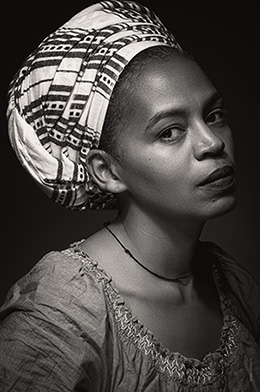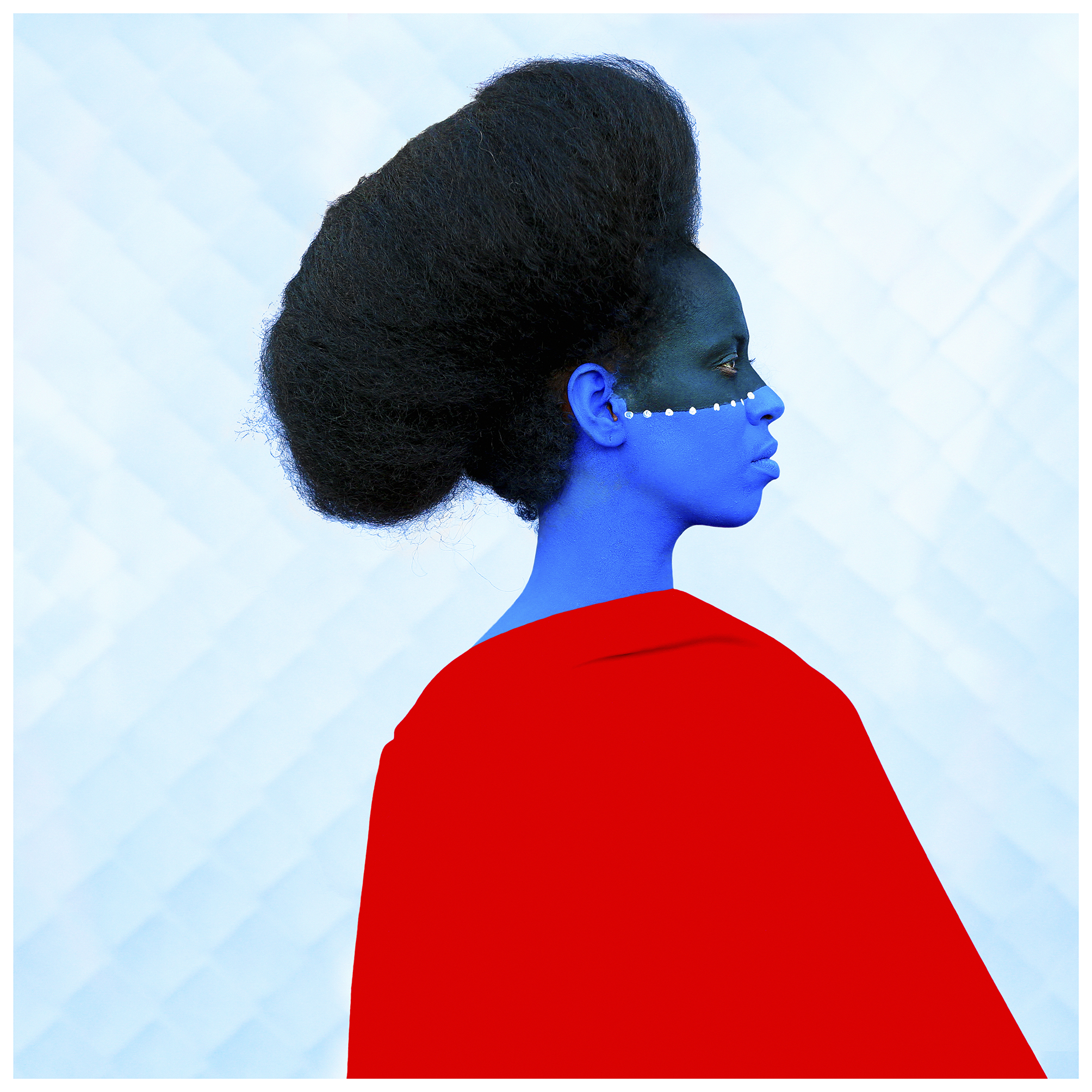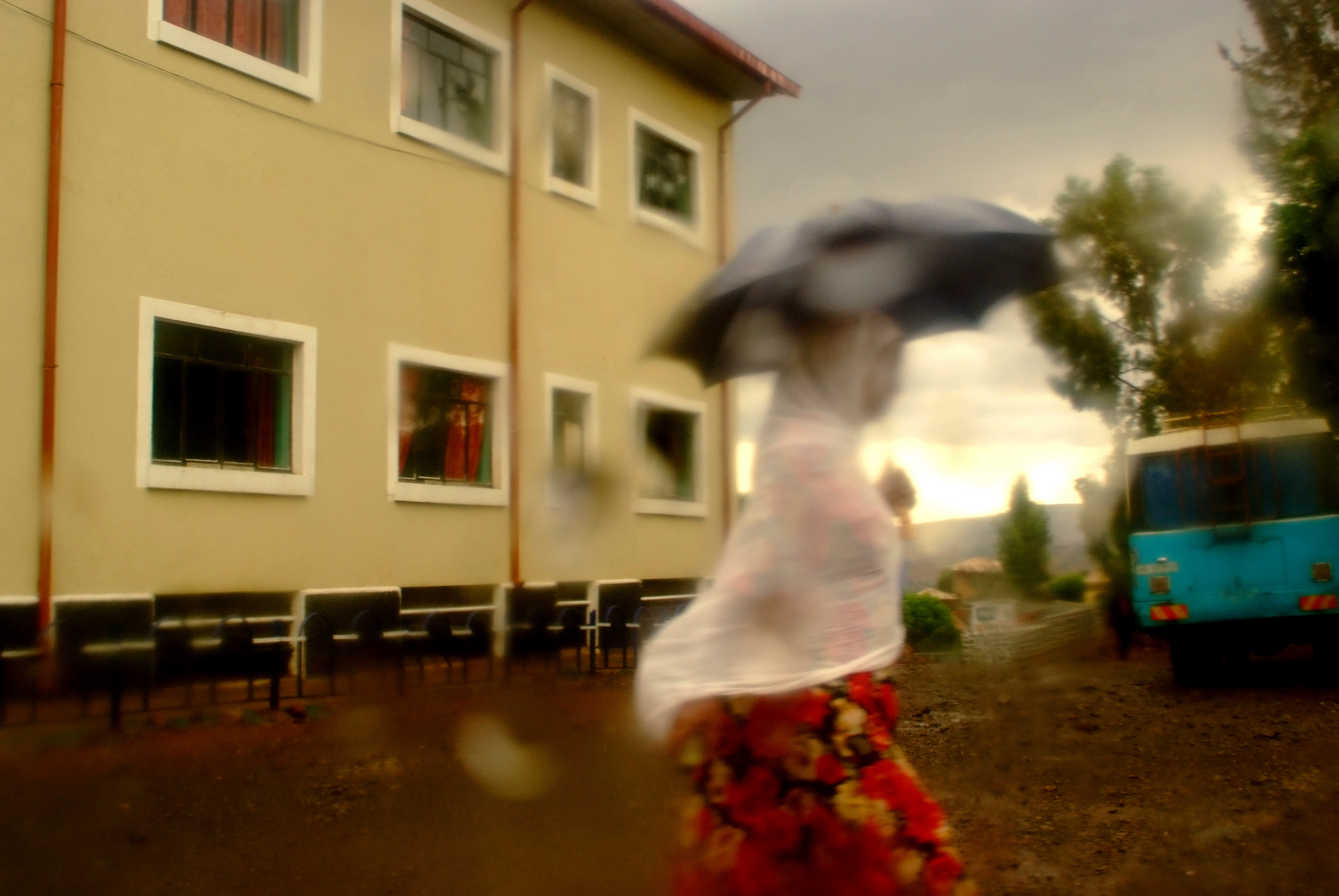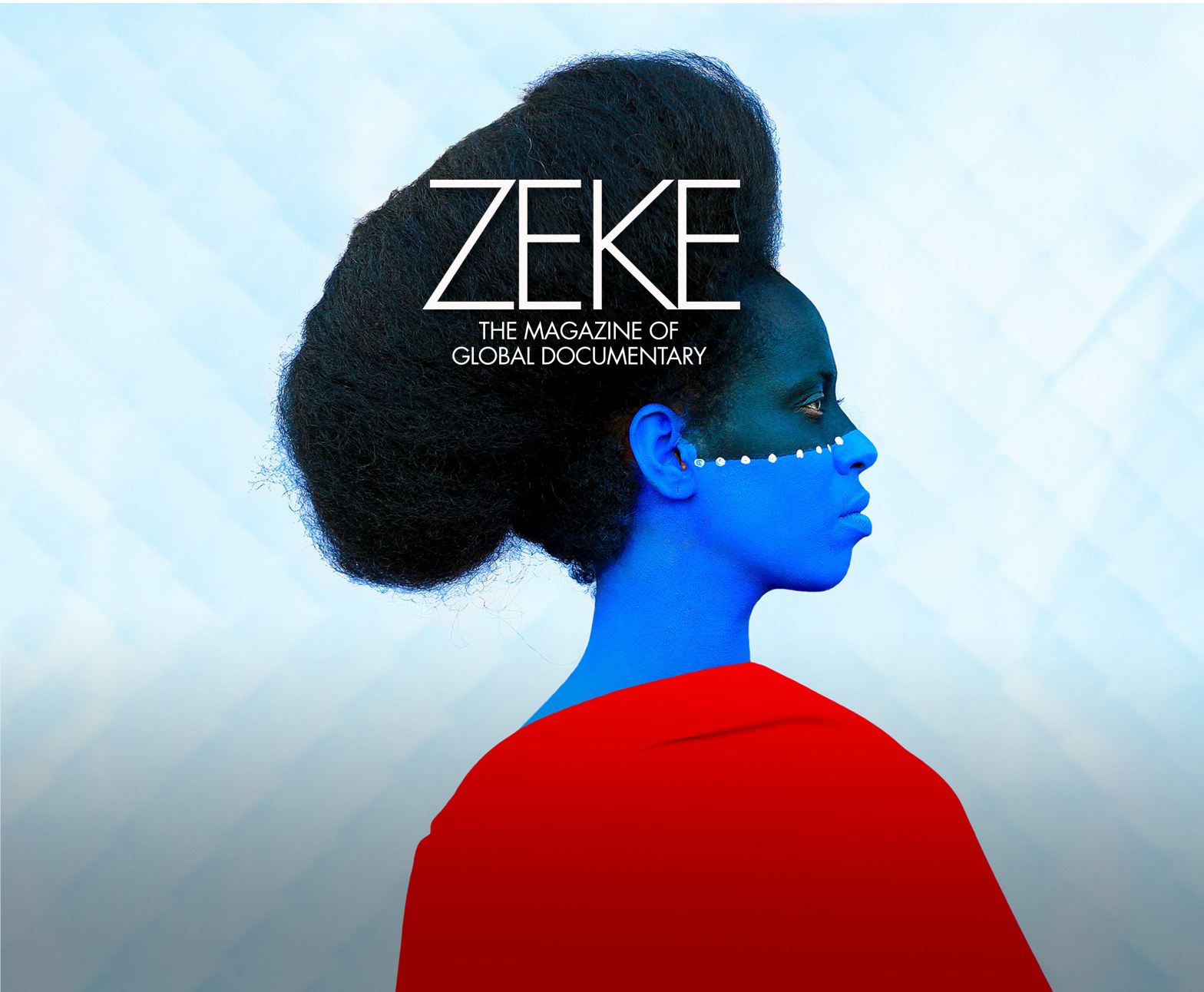Interview with Aida Muluneh
by Caterina Clerici

Born in Ethiopia, Aida studied film at Howard University in the US and then went on to work as a photojournalist at the Washington Post. Her work has been exhibited throughout the world and is in the permanent collections of the Smithsonian’s National Museum of African Art, Hood Museum, and the Museum of Biblical Art in the United States. Aida is the founder and director of the Addis Foto Fest and she continues to curate and develop cultural projects with local and international institutions through her company DESTA (Developing and Educating Society Through Art) in Addis Ababa, Ethiopia.
Caterina Clerici: How did you get into photography? Was your passion for photography related to the fact that you lived in so many different places at a young age?
Aida Muluneh: I was interested in photography from an early age. I’ve always been obsessed with images. During high school in Canada, we had a really great art teacher who took a few of us to the darkroom. When the first prints came out, it was almost like a magical moment for me.

As an Ethiopian and having lived in so many different places, people that I encountered always had misconceptions about Ethiopia. Granted, we were going through the famine in the 1980s, but that didn’t really match with the story I heard from my mother: Ethiopia was a far more complex place than the media was portraying it to be. So from that point on, I became aware of the misrepresentation you see in the media, and this triggered my life-long work. I really wanted to share with the world something a little bit different, not only about Ethiopia. I was living in the US and Canada, so I was always focusing on people of color, especially African-Americans and how they are portrayed in the media. That’s basically my journey to photography.
I’ve had great mentors, most of them African-American photographers. Coming back home was basically taking that conversation to Ethiopia. Now I’ve been there 10 years and this is what I’m pushing forward with my work, with the festival and panel discussions. As Africans and people of color, we need to be more engaged: not only producing images, but also writing stories on who we are.

CC: How are you trying to reclaim a different narrative of Africa with your work?
AM: I’m really trying to present work that has universality in it. I cannot deny my roots or my heritage or my culture, which will come into the work, but I’m trying to create bridges across our common humanity.
What I do is very personal work. It’s not something that I’m over-philosophizing about, but rather that I’ve either experienced or encountered along the way when I was working as a photojournalist. It’s about how to share the challenges in a different way, outside the blood, the beheadings and all the gore. I’m trying to make Africa digestible, meaning it’s a very complex place, it’s not so simple, and I’m only one person sharing my experiences. This is to share with the world — but also the continent and my people — that there is a different way of expressing a story, especially through photography.

If you look at the foundation of body painting for instance, you see this traditional body ornamentation in Africa but also in South America, Asia, and the Middle East. I’m taking things of the past and bringing them into the future, but also twisting them in a way that I’m having a different dialogue based on my personal experience that I want to share with all. It’s about raising questions, I’m not here to give solutions. There are many things that need more questioning, in terms of the direction we are going; not as nationalities, or based on borders and colors of our skin, but to look at collectively.
CC: One of the strongest influences of African tradition on your work seems to have been body painting. How did you get into it?
AM: Body painting has a different play depending on the series and the image. If you notice, the models look alike but there is a specific structure I look for in the face. It’s a way to remove race and gender; I’m trying to have a very specific message. The photos are also all women. Somebody asked me why I don’t pick men and that’s because I’m a woman telling the female story.
When I was at Howard University there was a fashion show and they had asked for an image to promote it. I picked two models that were going to be on the runway and I was really trying to show my African roots in my photography — you know, the challenge of duality is that you never fit anywhere — so I thought: “Let me paint the models and put these white dots!” The picture never got picked for the fashion show, but that was the beginning for me. I was shooting analogue at the time, I did three pieces and kept the images for myself. Then a few years later, I was selected for an exhibition at the Smithsonian’s National Museum of African Art, a show titled “Ethiopian Passages.” It was the first time I exhibited that work and it became part of the permanent collection.
After that I didn’t do any body painting for a while. I was in the middle of my journalistic work and immersing myself in documentary filmmaking. Many years later Simone Njami asked me to create a body of work for the Divine Comedy exhibition. I was trying to figure out if I should go back to my black and white, or do something completely different, or go back and explore body painting after ten years. I did that and was very insecure about the work, because I thought people didn’t expect that from me, but the reaction was amazing. After that, I started researching body painting globally and started seeing patterns, and I’ve been doing it since.

CC: You left Ethiopia a long time ago; in an interview, you said you moved back “with humility” and have felt like a foreigner in your own homeland. How do you come to terms with these two sides of your identity, and how does that affect your work?
AM: I left when I was five, lived in Yemen, Cyprus, England, all these different places. The only common thread was my mother’s insistence never to forget the homeland. I think the greatest gift that she gave me was that we couldn’t speak English in the house. Going back (to Ethiopia), the big advantage that I had was I could speak the language: I had a better chance to learn and fit into society.
Ethiopia really inspired me: I would not have been producing the same work that I do now if I didn’t live back home. There are so many textures that you don’t see anywhere else, for me this became a motivation to create this work. A lot of images I produce actually have a coding, patterns or references that only Ethiopians can understand. I would have never learned this in the West. Also, the West has a way of hiding certain realities, while here everything is in your face, even difficulties, and you have to find ways to deal with it. There are many challenges, but there is also a lot of grace. I had to learn, as opposed to impose my way of thinking.
CC: How do you think your work is helping change the perception of the African female body, in Africa and elsewhere?
AM: If you look at archival photos from Ethiopia at the turn of the century by European dudes who showed up to take photos of exotic Ethiopians, there is a lot of cultural misrepresentation, because the focus was making things exotic. They would take a photo of a woman with exposed breasts, but as an Ethiopian when you look at that, the cultural references don’t make sense — we know that that’s not the way a woman would be dressed in that region. Exoticising women’s bodies was a trend: with white women in Europe it would be considered pornography, but with black bodies it was accepted, it looked like an ethnological approach. The poses of women are very specific, and to me it’s more to emulate strength and pride of women as opposed to the vanity side.
We are in an extremely conservative society here. I don’t think anyone is yet thinking about the use of women’s bodies in my work. The first conversation is the face painting, then the colors and then the composition. It penetrates in different segments — from the government’s TV program to local hotels who have stolen my work to promote tourism in Ethiopia. So if it reaches that wide of an audience, it’s fascinating. How do I make an impact on the everyday person? That’s what matters: not teaching photographers, but teaching everyone else what the role of photography is in society. You have to educate before you can even get to the tougher conversations about how you document and what stories go out.
CC: How did the idea for the Addis Foto Fest come up and what is the aim?
AM: I arrived in Addis in 2007, after the Bamako Biennale, which was eye-opening: I had spent most of my life thinking that I was alone in my quest for changing the image of the continent. Meeting all these photographers from all over Africa and the world in Bamako and having this conversation with them was really inspirational.
I had been thinking about the festival as a way to connect photographers in Africa and the diaspora, because I saw that the conversation they were having in Africa and among African-Americans in the US was a similar one: it was about misrepresentation. They had just never met in one space to have this conversation together. When we started in 2010 that was the concept: have a global interaction to shift the conversation. We wanted to create the space and give them a different idea of Africa, so they could take it back to their own communities. Unless you’re on the ground, you won’t understand the fuller image.
CC: Is there a growing space for women photographers in Africa?
AM: I’ve been seeing a rising number of female documentary photographers, especially thanks to the festival, but we need to push more for the female voice. I was on the jury of the World Press Photo and you know, 83,000 submissions and only 15% are women. This is still a very male-dominated industry, regardless of whether you’re looking at Africa or Europe or the world. To me, the challenges are based on my own personal perceptions and limitations, but I found that being a woman has more advantages and it gives you more access to whatever you’re trying to express. I’ve seen some improvement, but it’s still not enough.

Masthead

ZEKE is published by Social Documentary Network (SDN), an organization promoting visual storytelling about global themes. Started as a website in 2008, today SDN works with thousands of photographers around the world to tell important stories through the visual medium of photography and multimedia. Since 2008, SDN has featured more than 2,800 exhibits on its website and has had gallery exhibitions in major cities around the world. All the work featured in ZEKE first appeared on the SDN website, www.socialdocumentary.net.
Spring 2018 Vol. 4/No. 1
ZEKE
Executive Editor: Glenn Ruga Guest Editor: J. Sybylla SmithEditor: Barbara Ayotte
Social Documentary Network
Founder & Director: Glenn RugaCommunications Director: Barbara AyotteSpecial Issue Editor: Caterina ClericiIntern: Demi Yueying Du
SDN Advisory Committee
Lori Grinker, New York, NYIndependent Photographer and Educator
Catherine Karnow, San Francisco, CAIndependent Photographer and Educator
Ed Kashi, Montclair, NJMember of VII photo agencyPhotographer, Filmmaker, Educator
Reza, Paris, FrancePhotographer and Humanist
Molly Roberts, Washington, DCSenior Photography Editor, National Geographic
Jeffrey D. Smith, New York NYDirector, Contact Press Images
Jamey Stillings, Sante Fe, NMIndependent Photographer
Steve Walker, Danbury, CTConsultant and Educator
Frank Ward, Williamsburg, MAPhotographer and Educator
Amy Yenkin, New York, NYIndependent Producer and Editor
ZEKE is published twice a year by Social Documentary Network Copyright © 2018 Social Documentary Network Print ISSN 2381-1390
ZEKE does not accept unsolicited submissions. To be considered for publication in ZEKE, submit your work to the SDN website either as a standard exhibit or a submission to a Call for Entries. Contributing photographers can choose to pay a fee for their work to be exhibited on SDN for a year or they can choose a free trial. Free trials have the same opportunity to be published in ZEKE as paid exhibits.
To subscribe: www.zekemagazine.com/subscribe
Advertising inquiries: glenn@socialdocumentary.net
Donors to The Campaign for ZEKE
ZEKE magazine and SDN would like to thank the following donors to The Campaign for ZEKE. Their support allows ZEKE to continue publishing. If you would like to support ZEKE, please visit www.zekemagazine.com/campaignforzeke
Founding SponsorRoree Iris Williams
BenefactorRudi DundasMartha Kongsgaard and Peter GoldmanJamey Stillings Photography, Inc.
SustainerAnonymous DonorJudy and Bob AyotteSusan Mazer
SupporterAnonymous Donors (1)Carol Allen-StoreyDr. and Mrs. Julien P. AyotteConnie Frisbee HoudeRobert I. Usdan and Amy YenkinJan Zychlinski
ContributorAnonymous Donors (4)Farida AlamDawn ColsiaMargo CooperMorrie GasserVivien GoldmanJohn ParisiPedro PerezJamie RoseBruce RosenCarolina SandrettoBob and Janet Walerstein Winston
DonorAnonymous Donors (7)Michelle BogreLiane BrandonCarla FiorinaJennifer FishNancy FultonJanet HunkelMichael KaneRusty LeffelHelena LongEric LudenPatrick McCarthyNathaniel NovodAlice NudelmanTracy PriceJames PyrzynskiMark TuschmanBenita VanWinkleAndrea Zocchi

Social Documentary Network61 Potter Street Concord, MA 01742 USA 617-417-5981 info@socialdocumentary.net www.socialdocumentary.net www.zekemagazine.com Twitter: @socdoctweetsInstagram: @socialdocumentarynetSDN FacebookZEKE Facebook
